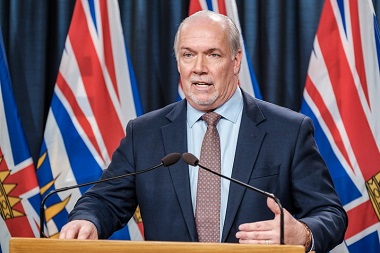
Premier John Horgan took part in the conference call with faith leaders. Photo by Province of BC (May 13).
Most church leaders appear to be on board with the provincial government’s agenda as we embark on the second stage of our battle against the COVID-19 pandemic.
But not all; some feel importance of attending church has been undervalued and are mobilizing to explain their point of view.
Faith leaders conference call
Premier John Horgan joined Health Minister Adrian Dix and Provincial Health Officer Dr. Bonnie Henry as they met by conference call with more than 100 faith leaders May 26 to discuss the state of affairs in BC as we seem to be emerging from the worst of the COVID-19 pandemic.
(This was the third such call; two earlier ones took place March 11 and April 7.)
Horgan was generous in his praise of faith leaders (many Christian, but also Jewish, Sikh, Muslim, Hindu and others) “for all you have done to flatten the curve.” But he added, as a general comment, “There’s a sense that we are out of the woods, that victory is in sight – but that is just not the case.”
He stood aside for Adrian Dix and Dr. Bonnie Henry during most of the conversation, but did interject thoughts occasionally, and mentioned at one point that he attends a United Church.
Adrian Dix, who also referred to attending church, said: “Our actions save lives. What you’ve done in your congregations saves lives. . . . We ask you to carry on.”
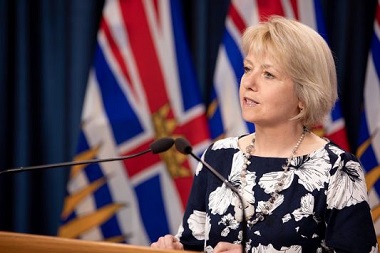
Dr. Bonnie Henry acknowledges the frustration of those who feel we are moving too fast, or too slow. Photo by Province of BC
Dr. Henry described the challenges facing us:
I know now that we are in Phase Two there is a lot to look forward to, and slowly and thoughtfully we are increasing our activities. I understand that with this transition there comes a lot of anxiety and some uncertainty and some frustration.
For some that means frustration that we are moving too slowly and for others frustration that we are moving too fast.
It is a balance and I know that is very hard to achieve. It has been a learning experience for all of us in the past week, trying to find that right balance. . . .
We’re now one week into Phase Two, with more people out, more businesses open. We cannot go back to our pre-COVID days. We need to find that balance that allows us to get things moving, to have increased contact – social contact and social connection – but not to go back to the place where this virus can take off and infect a large number of people in a short period of time.
Go here to see the video.
Summary of the call
 Trevor Vanderveen, pastor of First Christian Reformed Church, Vancouver, and Kathy Smith, Stated Clerk of Classis BC North-West (Christian Reformed), took part in the call and prepared this summary of the conference call for their fellow CRC leaders.
Trevor Vanderveen, pastor of First Christian Reformed Church, Vancouver, and Kathy Smith, Stated Clerk of Classis BC North-West (Christian Reformed), took part in the call and prepared this summary of the conference call for their fellow CRC leaders.
Note of appreciation
The provincial leaders thanked faith leaders across the province for leading the initial response, as well as the innovations that churches and faith communities have made.
The success in limiting the spread has been evident, particularly as we compare BC to the situation of other jurisdictions. Still, the leaders are acutely aware of the losses and deaths that have occurred in BC so far.
Time of transition
We’re now in a transition phase and we need to find a balance to ensure that we don’t have to go back to the restrictions put in place back in March. As other parts of the world have begun opening up there have been cases of churches being a source of spreading COVID-19.
This happened in Georgia, US, and in Frankfurt, Germany where 150 people recently came together for a church service and 107 people were infected and some have died.
We still need to limit our number of contacts, and those who are older, undergoing cancer treatments and respiratory illness ought to maintain physical isolation as they are able. The best way to protect ourselves and others is to keep ourselves to ourselves. Our actions save lives.
Guidelines outlined in the call
-
Building usage for worship
- The current limits of no more than 50 people, buildings at 25 percent capacity and physical distancing will most likely be in place through the influenza season this fall and into next year. Please maintain your current hybrid ways of maintaining services as you are best able. Dr. Henry was very firm about the ‘no more than 50 people’ limit. No exceptions.
- Singing is a high-risk activity that projects droplets more than two metres. Limit public singing as much as possible. (Singing appears to have been a source of the spread in Frankfurt.)
- For worship teams – and those who go in to record music – maintain proper distance, sanitize used items and wipe down microphones. Although this is low risk, don’t touch foam covers and then touch your face / rub your eyes.
- If you return to in-person worship, along with the limit of 25 percent capacity and no more than 50 persons per gathering (assuming your building can handle that many), please keep a 30-day record of everyone who comes to each event, along with their contact info. This eases tracking in case there is a case of COVID-19, and prevents health officials from needing to go public with the info. One church in the Lower Mainland had good tracking and they were able to reach all people directly.
- If you have multiple spaces that could accommodate 50 people at a healthy distance for in-person worship, it is possible to use these simultaneously as long as physical distancing is maintained, there is the use of separate entrances and attendance tracking takes place. This would be similar to the way a school operates.
- Look to faith leaders to help navigate ways to offer sacraments in a socially distant manner. Please adapt and modify.
- Limit the number of people in washrooms and clean them after each use.
- Alternatives to in-person worship
- Please maintain the online options for worship for at least the rest of this year.
- Dr. Henry was asked if small groups of up to 15 people could meet at someone’s home. She responded that two families could join together, provided this would be the only family they will continue with throughout this time. Don’t switch which people meet every week. Maintain no physical contact.
- Kids still need to stay further apart, not touch others, and keep their germs to themselves.
This image has been making the rounds on social media.
Kitchen usage
- No buffets anytime soon.
- Meals are permitted provided they are prepared by people who are physically distant from each other, and the meals are either plated or prepackaged. This is still risky, so the first line of defence is to not do it.
- Inter-jurisdiction travel for funerals
- I asked about a specific situation for our church which we are planning around. We’ve held off holding a funeral for a parishioner whose family lives in Vancouver, elsewhere in BC, and Alberta. There are currently no inter-provincial travel restrictions, so someone from Alberta could attend a funeral here, provided they are all healthy (if sick, stay away) and follow the same guidelines of limit and distance for worship space as well as aligning with the practices of the funeral homes. Anyone traveling from out of the country, if they were able to enter Canada, would need to self-quarantine for two weeks.
- Addressing racism
- Premier Horgan informed us that there is currently a non-partisan pledge appeal to stand up to racism and denounce racism and hate. A member of our congregation was recently a victim of a racist incident (picked up on the news) so this initiative is well-appreciated.
- Financial impact to faith communities & charities
- There are some existing funds in place as well as some breaks in property taxes, but it might help if you are able to inventory your increased costs due to COVID-19.
- COVID-19 Survey
- There have been 330,000 responses to the survey. There is under-representation by seniors and those in South Asian communities. Please encourage your parishioners to fill out the COVID-19 Survey.
- Other items
- If your church has a thrift store, it is better to hold it outside if possible.
- For the seniors who don’t think they are seniors, there is a higher risk for people 65-plus and those with underlying conditions.
- As we’ve seen in other jurisdictions, an outbreak can easily make us lose the progress we’ve made.
- Local environmental health agencies are a resource if you have questions about the safety of your building.
Several of these guidelines were elicited in response to many questions.
Moving too slow?
 While there is clearly a considerable fund of goodwill between faith leaders and the state at the moment, some church leaders believe the province does not put enough value on spiritual sustenance.
While there is clearly a considerable fund of goodwill between faith leaders and the state at the moment, some church leaders believe the province does not put enough value on spiritual sustenance.
Quite a number of churches believe the pace of return is too slow. At the time of writing, 56 churches from around BC have signed a letter initiated by Paul Dirks, pastor of New West Community Church, and Rob Schouten, pastor of Aldergrove Canadian Reformed Church, which urges the government to open churches more quickly.
Their Expand BC Worship Services letter, sent May 21, begins by thanking the government for its relative balance and avoidance of strict legal measures and offers assurances that their churches are following the law. But it carries on:
Honourable Premier, we believe that religious worship services are more important than most, if not all, of the activities that will resume during Phase 2 and 3.
Increasing access to worship services should be prioritized over recreational facilities or retail stores, not below them. On May 13, Dr. Henry explicitly mentioned that retail stores may exceed 50 people on their premises if social distancing measures are employed but denied this freedom for religious services.
The reverse should have been recommended. Not only has God commanded His people to worship Him regularly and corporately, but religious services help to maintain spiritual, mental and emotional health of congregation members.
Prohibiting worship services over 50 people through the worst phase of the pandemic is understandable, but with the curve flattened and the virus under reasonable control, we believe that the province must begin to allow larger church services, with an understanding that the safety measures introduced be maintained to limit the spread of the virus.
We implore you to consider expanding religious services in Phase 2 and 3 of British Columbia’s reopening. We respectfully ask that you allow religious gatherings based on some percentage of a building’s occupancy rather than based on a uniform cap of 50 people.
Go here for the full letter.
Many of the signatory churches are conservative Reformed (Canadian, Free, United), but Baptist, nondenominational and Pentecostal churches have also signed up, along with wide range of others. Just one denomination has lent its name to the letter, the BC & Yukon District of the Pentecostal Assemblies of Canada.
ACLN gathering
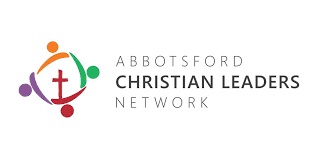 More than 30 pastors involved in the Abbotsford Christian Leaders Network (ACLN) met May 27 by Zoom to discuss various issues, including how best to undertake the return to church.
More than 30 pastors involved in the Abbotsford Christian Leaders Network (ACLN) met May 27 by Zoom to discuss various issues, including how best to undertake the return to church.
Ron Opmeer, pastor of Bethel Reformed Church and member of the ACLN executive, told me the gathering was addressed by Dwayne Toews and Erin Knott from the Alliance (CMA) Pacific District Office.
In a follow-up email to some 90 Abbotsford pastors, he sent his notes from the meeting, including a link to the Alliance’s “evolving nine-page document” (updated May 27), BC’s Restart Plan: Church Guidelines & Considerations. They also have a COVID-19 & the Church page.
(I recommended this helpful document a couple of weeks ago in my May 14 article When do we go back to church?)
The ACLN executive will meet next week to discuss the matter further, taking into account both the province’s meeting with faith leaders and the dissident church leaders’ letter.
Catholic response
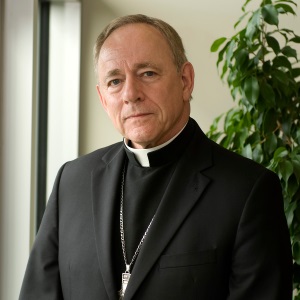
Archbishop Michael Miller
There are far fewer Catholic churches than Protestant ones in this area, which means that their churches are usually quite large, with many, pre-COVID-19, welcoming thousands to church each week. Virtually no Catholic churches would be able to accommodate their flock in one service, or even several, given the limit of 50 people.
Archbishop Michael Miller described how things are developing for the Roman Catholic Church in a YouTube video posted May 26.
Referring to provincial government leadership on the issue, including the conference calls, Miller said:
Yes, we have been very fortunate . . . Churches have been treated as other public places and buildings. We haven’t been singled out for any particular rules and so on. That’s why we want to observe the recommendations of public health authorities, because it ensures safety and health. . . .
Some people will want to come back to mass, God bless them, who probably shouldn’t come because of their frailty and their underlying conditions. . . . I really do urge them to continue with live-streaming of masses. That’s why we’re going to continue that practice.
Miller said masses will be shortened, as that lessens the chance of passing on the virus. Some elements of a normal service will be left out – the offertory procession, the kiss of peace, announcements. He also described the process for reception of Holy Communion, which is so central to the mass.
He added, “Congregational singing is going to be kept to a minimum.”
One unique feature in the Catholic church is that there is normally an obligation to attend Sunday mass; that requirement has been suspended during the pandemic.
Go here to watch the video.
National focus
Several national initiatives are worth noting, even as we focus primarily on British Columbia:
Leading into Our New Future
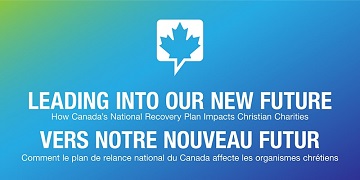 This is only for early birds, as it starts this morning at 9:30 (though it will probably be available in some form afterward).
This is only for early birds, as it starts this morning at 9:30 (though it will probably be available in some form afterward).
Featuring Dr. Robert Strang, Chief Medical Officer of Health of Nova Scotia, the ‘Leading into Our New Future’ audio event will focus on Canada’s Recovery Plan and Christian Charities.
Among the issues he will address:
- Will there be restrictions on group sizes until a vaccine is available?
- What are the key ways Christian ministries can support the recovery and renewal of our cities or communities?
- Will seniors be encouraged to stay home for the foreseeable future?
- Should we anticipate a second wave in Canada?
The sponsors are Global Leadership Network Canada, WayBase and World Vision. Supporting partners include: Canadian Council of Christian Charities, The Evangelical Fellowship of Canada, Canadian Christian Relief and Development Association, Compassion Canada, Food for the Hungry, Alpha Canada, Leader Impact, Canadian Christian Business Federation and City Movement.
Principles for a Just Recovery
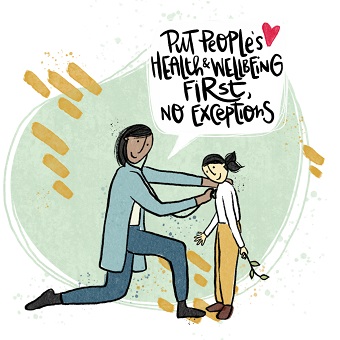 Citizens for Public Justice (CPJ) and other Christian groups taking part in a post-COVID-19 focus on justice:
Citizens for Public Justice (CPJ) and other Christian groups taking part in a post-COVID-19 focus on justice:
CPJ is proud to be part of a massive pan-Canadian coalition calling on the federal government to pursue a just recovery. Collectively, over 150 organizations worked together to develop six Principles of a Just Recovery:
-
- Put people’s health and well-being first, no exceptions.
- Strengthen the social safety net and provide relief directly to people.
- Prioritize the needs of workers and communities.
- Build resilience to prevent future crises.
- Build solidarity and equity across communities, generations, and borders.
- Uphold Indigenous rights and work in partnership with Indigenous Peoples.
Upon their public launch May 25, almost 200 organizations across Canada, representing millions of members had endorsed the principles. Organizations wishing to add their name to this growing list are encouraged to do so here.
To put these principles into practice, CPJ is submitting key policy recommendations for each of principles to several parliamentary committees and the federal government’s COVID Cabinet Ministers.
Other Christian groups involved are KAIROS: Canadian Ecumenical Justice Initiative and Development and Peace – Caritas Canada.
Guidance from EFC President
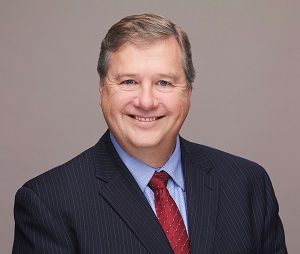
Bruce Clemenger
The head of one of Canada’s major ecumenical organizations has some advice suitable for the ‘Expand BC Worship Services’ group, and all of us.
Responding in an Ontario newspaper article titled ‘Re-open churches now, Chatham pastor asks,’ he responded cautiously:
However, some national Christian organizations continue to heed – and agree with – the advice of public health officials.
Bruce Clemenger, president of The Evangelical Fellowship of Canada, said he often hears that comparison between churches and grocery stores when people complain about public health restrictions preventing in-church services.
He noted that people move in and out of grocery stores relatively quickly, compared to the hour or more they spend inside a church to attend and participate in a religious service.
“When you have a closed environment, a large number of people for an extended period, it’s that situation where the virus can travel in the air,” Clemenger said.
He’s also seen studies that show singing is “quite conducive to the spreading of the virus because … it’s like a sneeze. You’re projecting your air and you’re breathing deeply, more deeply than when you’re talking.”
He said he believes churches across Canada have largely followed public-health guidelines.
“But there is a desire to get back together, but to do so safely,” said Clemenger.

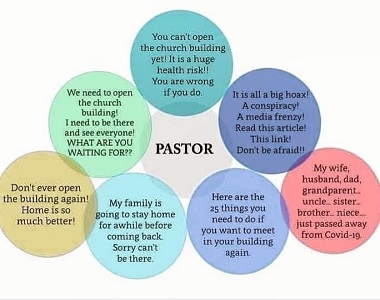
Thanks Neil and Conrade; I appreciate your support.
Hey Flyn,
Thank you for all the updates to keep us connected during this unprecedented stay@home season.
Conrade
Thanks for this, Flyn. Lots of great, helpful, information with wisdom about returning to in-person worship.